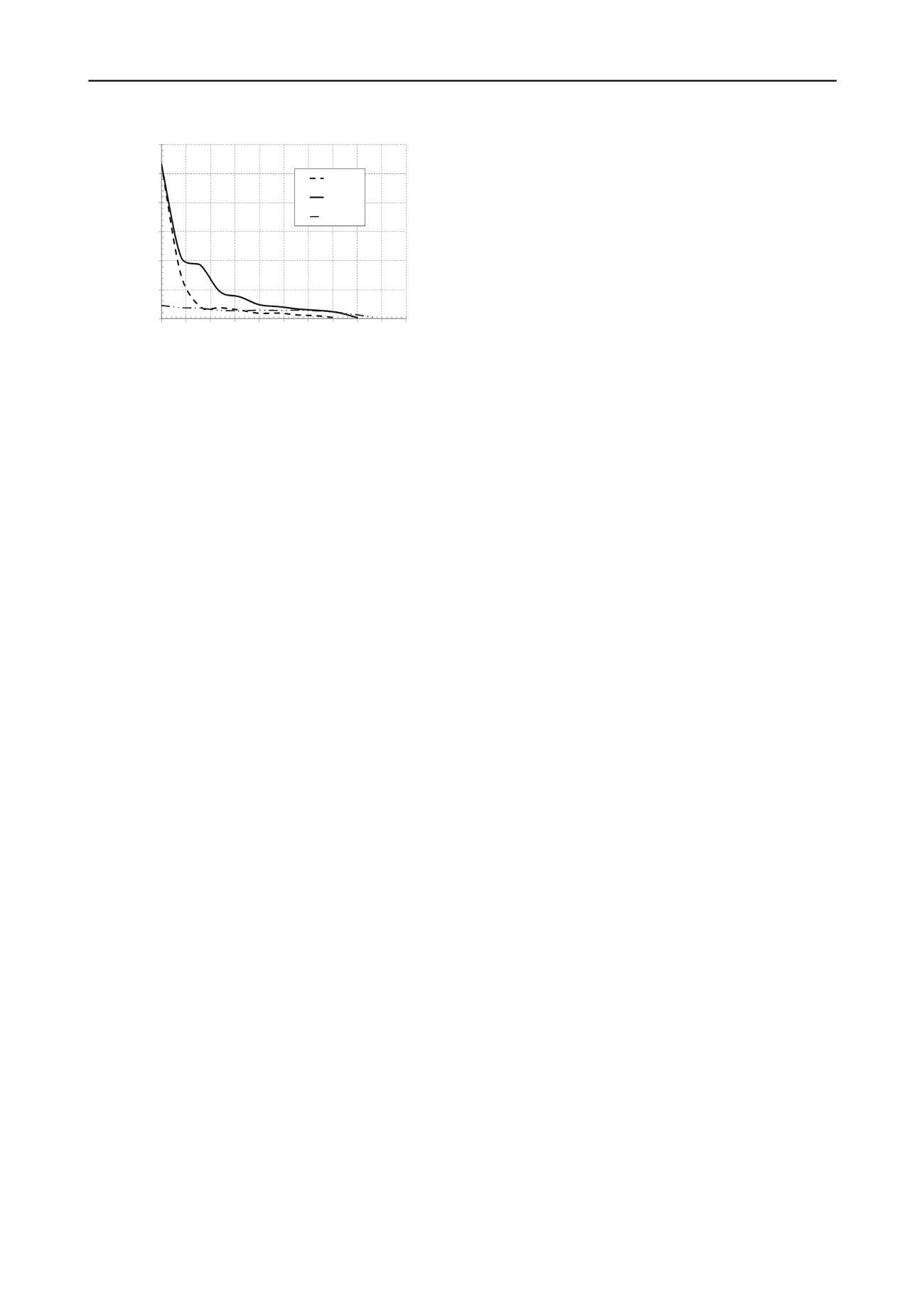
2710
Proceedings of the 18
th
International Conference on Soil Mechanics and Geotechnical Engineering, Paris 2013
0
500
1000
1500
2000
2500
3000
0 50 100 150 200 250 300 350 400 450 500
0,35m
0,40m
0,50m
Stiffness
(kN/mm
2
)
Load (kN)
8 REFERENCES
Aoki N. and Velloso D. 1975. An approximate method to estimate the
bearing capacity of piles.
Panamerican Conference on Soil
Mechanics and Foundation Engineering
, V, Buenos Aires. V.1,
367-376
Bustamante M. and Gianeselli L.1982. Pile bearing capacity predictions
by means of static penetrometer CPT.
Proceedings of the Second
European Symposium on Penetration Testing
, ESOPT II,
Amsterdam, May 24-27, A.A. Balkema, Vol. 2, pp. 493-500
Das B.J. 1983. A procedure for estimation of uplift capacity of rough
piles.
Soils and Foundations
23 (3), 72-77.
Décourt L. 1996. Analysis and design of deep foundations: piles. In:
Hachich et al. (eds). Foundations: theory and practice. São Paulo.
Pini. pp. 336 – 344. (in Portuguese)
Decourt L. 1999. Behavior of foundations under working load
conditions. Pan-American conference on Soil Mechanics and
Geotechnical Engineering, 11
th
. Brazil. V.4, 453-488.
Figure 5. Stiffness curves
6 CONCLUSIONS
- The determination of the ultimate load using CPT
demonstrates good results when the LCPC Method is used.
Fellenius B.H. 2012.
Basics of foundation design
. Electronic Edition.
, 384p.
- The determination of the ultimate load using SPT
demonstrates good results when using the Décourt (1996)
method, assuming sandy soil and the adoption of an correction
parameter (β
L
= 1.2) due to the lateritic soil in the location;
Martin D. 1966.
Étude à la rupture de différents ancrages sollicitées
verticalem
ent. Thése de Docteur-Ingénieur. Faculté des Sciences de
Grenoble.
- The Das (1983) method provides good results in determining
ultimate load, however its use depends on the pile-soil angle of
friction and a pull-out coefficient, parameters which are not
always available for the particular soil being analyzed;
Martin D. 1973. Calcul des pieux et foundations à dale des pylons de
transport d’energie électrique. Etude théorique et resultats d’essais
en laboratorie et in-situ.
Annales de L’ Institut Techinique du
Batiment et Des Travaux Publies
, 307-308.
Meyerhof G.G. and Adams J.I. 1968. The ultimate uplift capacity of
foundations.
Canadian Geotechnical Journal
5 (4), 225-244.
- The best prediction of ultimate load using the Martin (1966,
1973) method is obtained using a rupture surface inclination
angle equal to zero, indicating rupture in the pile-soil
interaction;
Meyerhof G.G. 1973. Uplift resistance of inclined anchors and piles.
International Conference on Soil Mechanics and Foundations
Engineering
, VIII, Moscow. V.2, 167-172
NBR 12131. 1986 –
Piles. Static load tests
. ABNT (in Portuguese)
- The load transfer function presents good definition for unit
skin-friction, finding that displacements in the order of 5mm
were required for their almost total mobilization;
De Nicola A. and Randolph M. F. 1993 Tensile and compressive shaft
capacity of piles in sand.
ASCE Journal of Geotechnical
Engineering
. 119 (12), 1952-1973
- The Décourt (1999) stiffness method demonstrated good
results in the prediction of ultimate load based on the analysis of
the load vs. displacement curve.
Philipponnat G. 1978. Méthode pratique de calcul des pieux à l’aide du
pénétromètre statique. Paris. Soletanche Enterprise.
Informations
Techiniques Bulletin
16, 21p.
Poulos H.G. 2011. The de Mello foundation engineering legacy.
Soils
and Rocks
34 (1), 3-31.
7 ACKNOWLEDGEMENTS
The authors wish to thank the São Paulo Research Foundation
(Fapesp), the University of São Paulo (EESC-USP) and the
university lecturers José Henrique Albiero and Judy
N.R.Mantilla.


